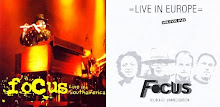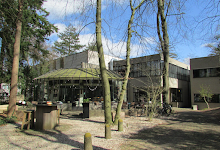Archive number: 115
Title: Remember Mozart/Hurkey Turkey
Main Album: Focus 9 (New Skin)
Track number: 3
Genre: Progressive Rock Instrumental
Studio: Fieldwork Studios, Schoten, Belgium
Length: 04:02
Composer: van Leer
Musicians: Thijs van Leer – Hammond organ, piano, keyboard, flute, voice; Niels van der Steenhoven – Guitars; Bobby Jacobs - Bass; Pierre van der Linden - Drums
Producer: Bobby Jacobs and Thijs van Leer
Engineer: Han Nuijten
Label: Red Bullet
Date of recording/release: Summer 2006
Alternative version: None
Notes: Following a drum beat there is a slow, deliberate introduction led by a five note guitar, bass and piano riff, more or less repeated eight or nine times (01:00-0024). Next comes a more tuneful section, hailed by a Mozartian trill and featuring the flute along with the band and harpsichord-like keyboards (from 00:25). This goes on until 01:12 when first the guitar then the keyboard (01:13-01:17) re-introduce the opening theme backed this time by van Leer's improvised flute (01:18-01:40). This leads to the central motif, van Leer's piano and band backed voice, based on the famous Mozart piece Alla Turca (hence the titles). That sections ends at 02:16 (slowing down before speeding up again from 02:02). At 02:17 the opening intro is played in slightly lengthened form for the third and last time, backed this time by squealing and wild electric guitars. At 02:52 we come out again with the tuneful and flute dominated second section broken up only by two brief sections on what sounds like acoustic guitar and keyboard (03:12 03:23) and keyboard with flute (03:41-03:46). The piece ends with a note from the flute.
The third movement of Wolfgang Amadeus Mozart's Piano Sonata No. 11 in A major, K 331 (300i) (from WIkipedia) is a sonata in three movements:
1. Andante grazioso — a theme with six variations 2. Menuetto — a minuet and trio 3. Alla Turca: Allegretto in A minor and major.
All the movements are in the key of A major or A minor; therefore, the work is homotonal. A typical performance of the entire sonata takes about 20 minutes.
It is uncertain where and when Mozart composed it; however, Vienna or Salzburg around 1783 is currently thought to be most likely.
The last movement, Alla Turca, popularly known as the Turkish Rondo or Turkish March, is often heard on its own and is one of Mozart's best-known piano pieces. It imitates the sound of Turkish Janissary bands, the music of which was much in vogue at that time. Various other works of the time imitate this music, including Mozart's own opera The Abduction from the Seraglio.
Repeated notes, repeated ornaments, and loud/soft passages are characteristic of the Alla turca style. The imitation probably came closer with the piano of Mozart's day, whose bass strings made something of a rattle when played loudly, than is possible on modern pianos.
In Mozart's time, the last movement was sometimes performed on pianos built with a "Turkish stop", allowing it to be embellished with extra percussion effects.
Moreover, this third movement is implicitly related to the first one, because the beginning of the "Rondo" can be seen as an additional variation of the "Tema" of the first movement, varied in the Janissary style.




















